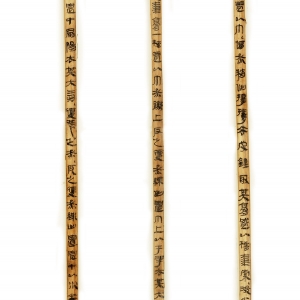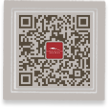Exhibition of the Chinese ancient calligraphy on bamboo slips and silk

Introduction
Exhibition of the Chinese ancient calligraphy on bamboo slips and silk
To write on bamboos and silk is new and strange to us today. Our encounter with the calligraphy on bamboos and silk began with the archaeological discoveries at the beginning of the 20th century while the calligraphy on bamboos and silk had been a daily life until the popularization of paper. The unearthed books on bamboos and silk were written from the Warring States to Wei and Jin dynasties, spanning for nearly a thousand years. Later on, the inscriptions on bronzes and tablets were used by ancient Chinese calligraphy learners as models instead of the calligraphy works on bamboos and silk because these early bamboo and silk works have been lost in history. In the Qing dynasty, "epigraphy" was incorporated into the aesthetic system of calligraphy. It exerted profound influence on contemporary calligraphy learners in aspects from aesthetic taste to the model selection.
Now faced with a large number of diverse calligraphy works on bamboos and silk, we have noticed the possibility of rewriting the history of Chinese calligraphy. These works recorded the factors affecting the writing effect including the calligrapher’s writing habits and strokes, aesthetic taste of different times, customs of different regions, different writing tools and styles. It is difficult to use the existing theoretical system of calligraphy to interpret the complexity of font evolution and the characteristics of the times in the layout in silk calligraphy, so only when we abandon the traditional cognition and immerse ourselves in these works can we feel the beauty of them.
This exhibition aims to restore the diversity and richness of the calligraphy on bamboos and silk as much as possible, outline its development process from the Warring States to the Wei and Jin dynasties, and inspire new thoughts on Chinese calligraphy.
Yan Fuchu
From Nov. 11th, 2019 to Nov. 30th, 2019.
No. 2 Special Exhibition Hall, 1F
Free Admission

Highlights
- Silk scroll, unearthed in 1942 at the Zidanku Chu tomb in the Warring States, Changsha, Hunan Province and now collected in the Hunan Museum. Height: 4.5cm; Width: 2.5cm.
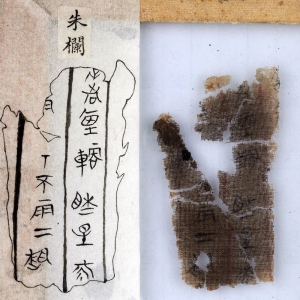
- Twelve tombs from the end of the Warring States to the Qin dynasty were excavated at Shuihudi, Yunmeng County, Hubei Province, among which more than 1,000 Qin slips were unearthed from the tomb No.11, recording the Qin laws and archives. The calligraphy in the slips is delicate and smooth, written in the seal and official script with informal font and shape.

- Wushi'er Bingfang, which dates from earlier than the compilation period of Yellow Emperor's Canon of Medicine, was the most ancient medical prescription found in China. It was written by flat seal character of the Qin dynasty, with both the charm of seal character and the style of official script, and some of the characters were very similar to those of Chu slips. This discovery greatly expanded our impression of the overall appearance of calligraphy in the Western Han dynasty.
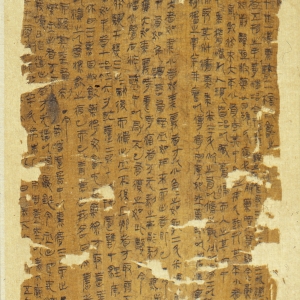
- Western Han dynasty, silk scroll, unearthed in 1973 at the No.3Mawangdui Han tomb, Changsha, Hunan, now collected in the Hunan Museum. Height: 21.5cm; Width: 14cm.
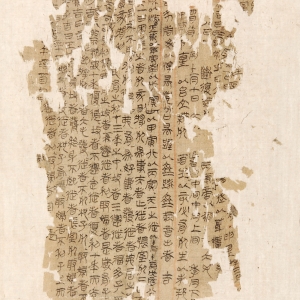
- Western Han dynasty, silk scroll 7205-7, unearthed in 1973 at the No.3 MawangduiHan tomb, Changsha, Hunan, now collected in the Hunan Museum. Height: 24cm; Width: 12cm.
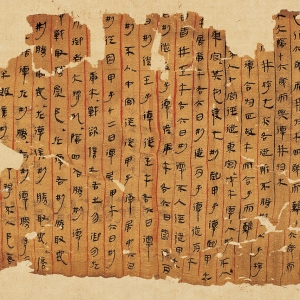
- Western Han dynasty, silk scroll, unearthed in 1973 at the No.3 Mawangdui Han tomb, Changsha, Hunan, now collected in the Hunan Museum. There were 47 lines, about 3000 words, with long strips of ink at the beginning. Its content was basically the same as that of the current edition. It was one of the earliest transcript of Zhouyi Copulative. Height: 23.5cm; Width: 11cm.
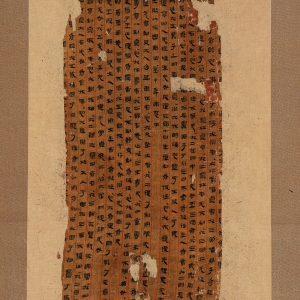
- Western Han dynasty, wooden plaque, unearthed in 1973 at the No.1Mawangdui Han tomb, Changsha, Hunan, now collected in the Hunan Museum. Length: 8-9.5cm; Width: 5.5-6.5cm.
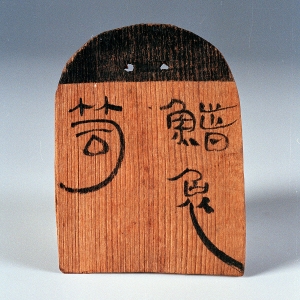
- In the 12th year of emperor Wendi of the Western Han dynasty, bamboo slips and bamboo slips, unearthed in 1973 at Ma Wangdui No.1 Han tomb, Changsha, Hunan, now collected in the Hunan Museum. It was used to record the name and quantity of funerary objects. Unlike copying official documents, its written form was informal and natural and some of the characters have shown a strong style of running hand. Length: 17.1-28cm; Width: 0.8-6cm.
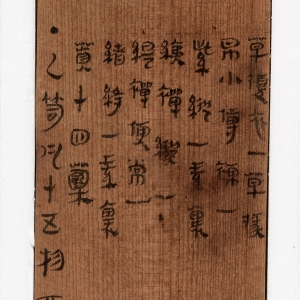
- In the seventh year of the reign of Emperor Wen of the Western Han dynasty, wooden slip, unearthed in 1993 at the No. 18 tomb in Gaotai, Jingzhou, Hubei Province, now collected in the Jingzhou Museum. The tomb was a special one in the early Western Han dynasty in Jiangling area, the excavations from which had some characters of both Qin and Chu cultures. The unearthed 4 pieces of wooden slips were well preserved in golden color, with clear handwriting and traces of the silk binding.
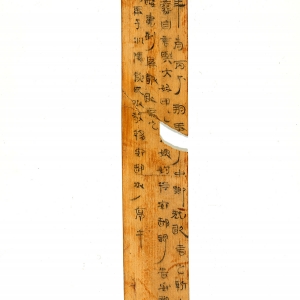
- Six pieces of the bamboo slips were unearthed at the No.10 tomb, Fenghuang Mountain, Jiangling area. There were characters on both sides except one on one side. The characters were inked official script, with a slightly fat brush, while some looked neat and some had the taste of running hand.
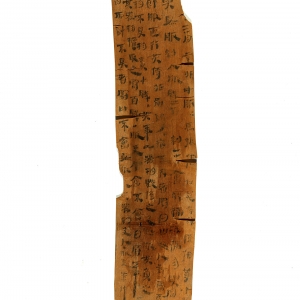
- In the fourth year of the reign of Emperor Jing of the Western dynasty, bamboo slip, unearthed in 1973 at the No. 10 tomb at Fenghuang Mountain, Jiangling, Hubei Province, now collected in the Jingzhou Museum. Length: 22.8cm; Width: 4.3cm; Height: 0.2cm.
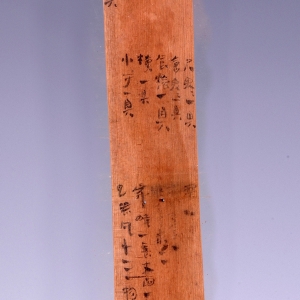
- Han bamboo slips at Huxi MountainSee More
